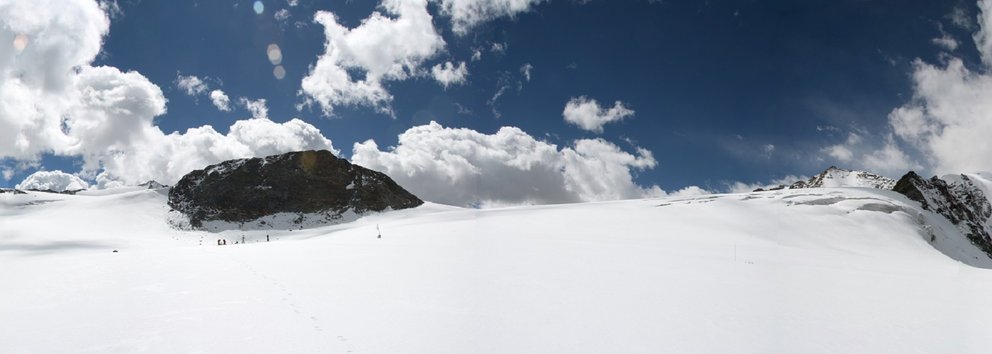Atmospheric drivers of glacier change

Glaciers are pivotal indicators of climate change that translate changes in the ambient atmospheric conditions into mass change. Ongoing glacier melt and consequent freshwater storage loss in recent decades, in response to changing climate conditions, poses many challenges ranging from global sea level rise to regional hydro-political conflicts to local hazards such as glacial lake outburst floods. These issues are pertinent to glacier change in High Mountain Asia, as this region hosts the largest assemblage of glaciers outside the poles, and is experiencing increasing transboundary water conflict and local geomorphic hazards. Previous studies in HMA paint a picture of spatially heterogeneous mass response due to the complex topography and varying influence and interaction of large-scale and local atmospheric circulation systems.
Most mass change studies rely on remote-sensing derived geodetic elevation changes or statistical relations between air temperature and melt (i.e., temperature index models) which do not allow for the quantification of the driving forces of glacier mass balance. Instead, surface energy- and mass balance models enable the attribution of dominant meteorological drivers of glacier response and are thus crucial for the understanding of glacier behaviour under current and future climate. Their application is however limited to few selected glaciers with reliable observations that can address both the strong dependency on reliant forcing data by means of automatic weather station measurements and the need for calibrated model parameters often extracted using previous empirical knowledge or tuned using observations.
The overarching goal of this project is to improve our understanding of the drivers of glacier change in HMA in the present and future by developing methods for large-scale forcing of SEB models and utilizing glacier evolution projections using the Open Global Glacier Model. This creates three necessities:
- First and foremost a scalable open-source model framework that allows for reproducibility and transparency
- Reliable climatological forcing data given the often insufficient representation of complex terrain due to coarse topographical information in gridded reanalysis products
- A robust parameter estimation that bypasses the non-transferability of parameters between glaciers and time while simultaneously allowing for multiple best-fit solutions (i.e., parameter equifinality)
The model framework chosen to meet these needs is the open-source, python-based surface energy- and mass balance model COSIPY. COSIPY model developments and calibration frameworks will be open access.
The need for reliable climatological forcing data will be addressed by evaluating high resolution climate simulations conducted with the COSMO climate model as part of the CPTP project (Convection-Permitting Third Pole) as potential forcing data.
Model parameter optimization will rely on remotely obtained observations, mainly focused on developing and applying observed transient snowline altitudes to (semi)-automatically calibrate free model parameters using Bayesian inference.
Project
Project Leader:
Nikolina BAN
Emily COLLIER
Fabien MAUSSION
Lindsey NICHOLSON
Members:
Niklas RICHTER
Project Duration:
11/2021 to 10 /2024
